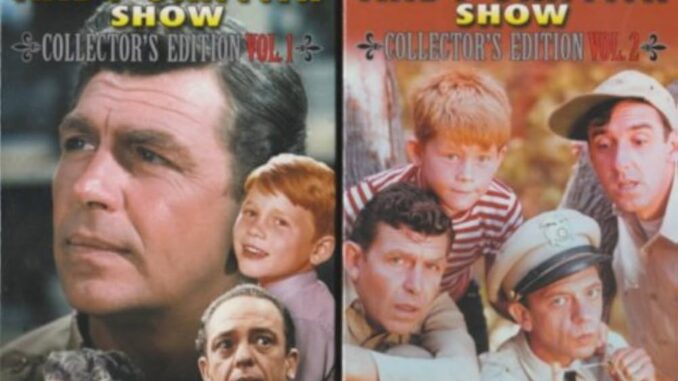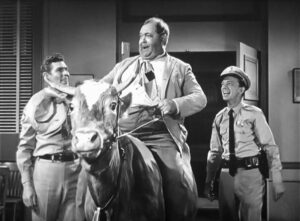
“The Andy Griffith Show,” a cornerstone of American television, masterfully blends humor with social commentary, creating a rich tapestry that reflects the dynamics of law enforcement and community life in 1960s America. Through its comedic narratives and relatable characters, the show addresses various social issues while maintaining a lighthearted and entertaining tone.
Humor as a Vehicle for Social Commentary
At the heart of the show is the character of Sheriff Andy Taylor, portrayed by Andy Griffith, who navigates the challenges of law enforcement with wit and wisdom. Andy’s humorous approach often diffuses potentially tense situations, illustrating the idea that effective policing doesn’t solely rely on authority but also on understanding and communication. This nuanced portrayal of law enforcement presents a more humane view of police work during a time when tensions were rising in American society, particularly around issues of civil rights and authority.
For example, Barney Fife, Andy’s bumbling deputy, provides ample comedic moments that highlight the absurdities of law enforcement. His exaggerated enthusiasm and frequent blunders serve not only as comic relief but also as a commentary on the challenges and vulnerabilities of those in authority. Barney’s character often illustrates the gap between perception and reality in policing; while he aspires to be a capable officer, his antics reveal the fallibility of human nature. Through Barney, the show communicates that police officers are not infallible heroes but regular people with their own insecurities and challenges.

Community Dynamics and Relationships
The show’s humor is deeply intertwined with its depiction of community dynamics. Set in the fictional town of Mayberry, the series portrays a close-knit community where relationships are central. The humor often arises from the interactions among residents, reflecting the complexities of small-town life. For instance, Aunt Bee’s well-meaning attempts to maintain harmony often lead to humorous misunderstandings, revealing the challenges of interpersonal relationships.
Episodes such as “The Pickle Story” exemplify this blend of humor and social insight. In this episode, Aunt Bee’s pride in her pickles becomes a source of conflict and humor when Andy and Opie attempt to hide their disdain. This scenario highlights the pressures of social expectations and the importance of honesty in relationships, all while maintaining a comedic tone. The laughter generated from these situations often leads to moments of reflection, encouraging viewers to consider the deeper implications of community interaction.
Navigating Social Issues with Humor
While the show largely avoids direct confrontations with contentious social issues, it subtly addresses them through humor and narrative. For example, episodes like “The Loaded Goat” explore themes of public safety and the consequences of neglecting responsibilities. The humor in these scenarios often serves as a gateway to discuss broader issues, such as the balance between personal freedom and community safety.
Moreover, the portrayal of Mayberry as a predominantly white, homogeneous community reflects the era’s social realities. The show sidesteps explicit discussions of race, yet its setting and character interactions implicitly comment on the social norms of the time. In a rapidly changing America, “The Andy Griffith Show” provided a nostalgic view of a simpler, more harmonious community, allowing audiences to escape into a world where conflicts were resolved through understanding and humor.
